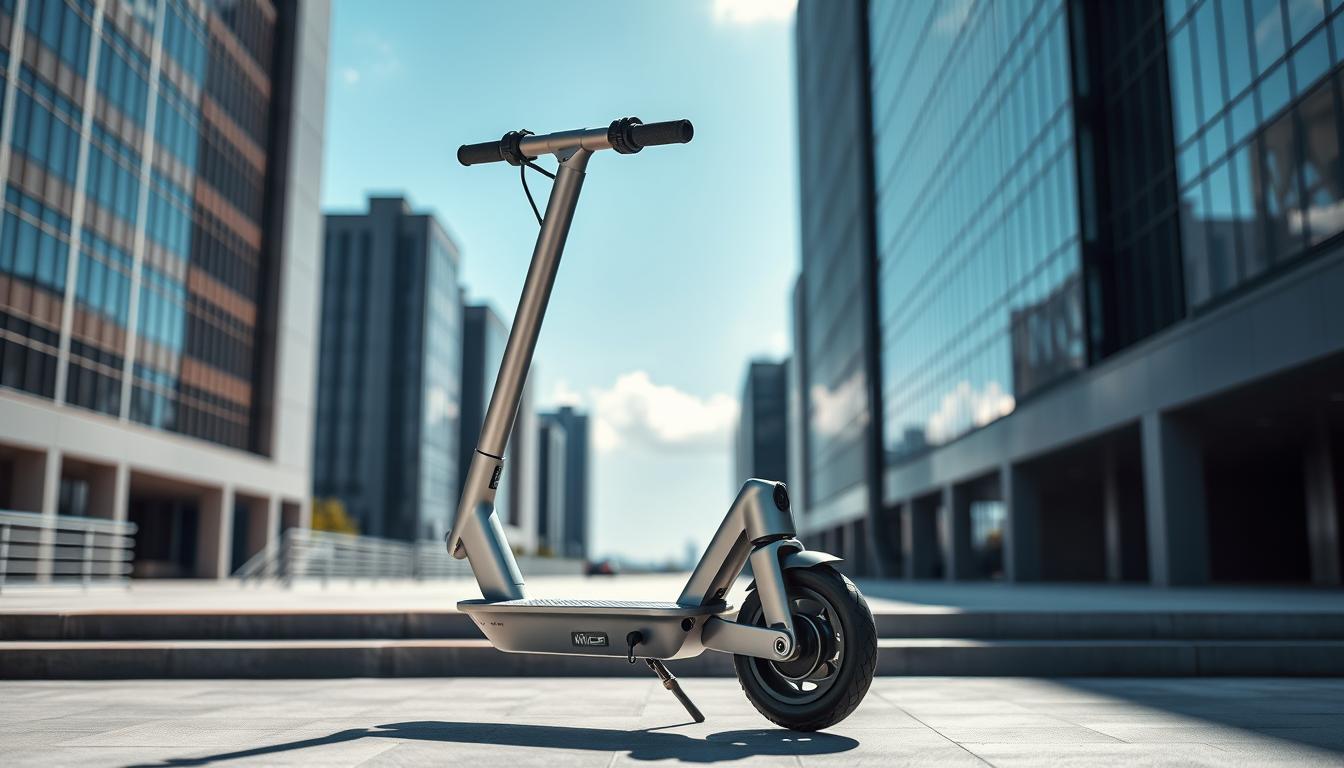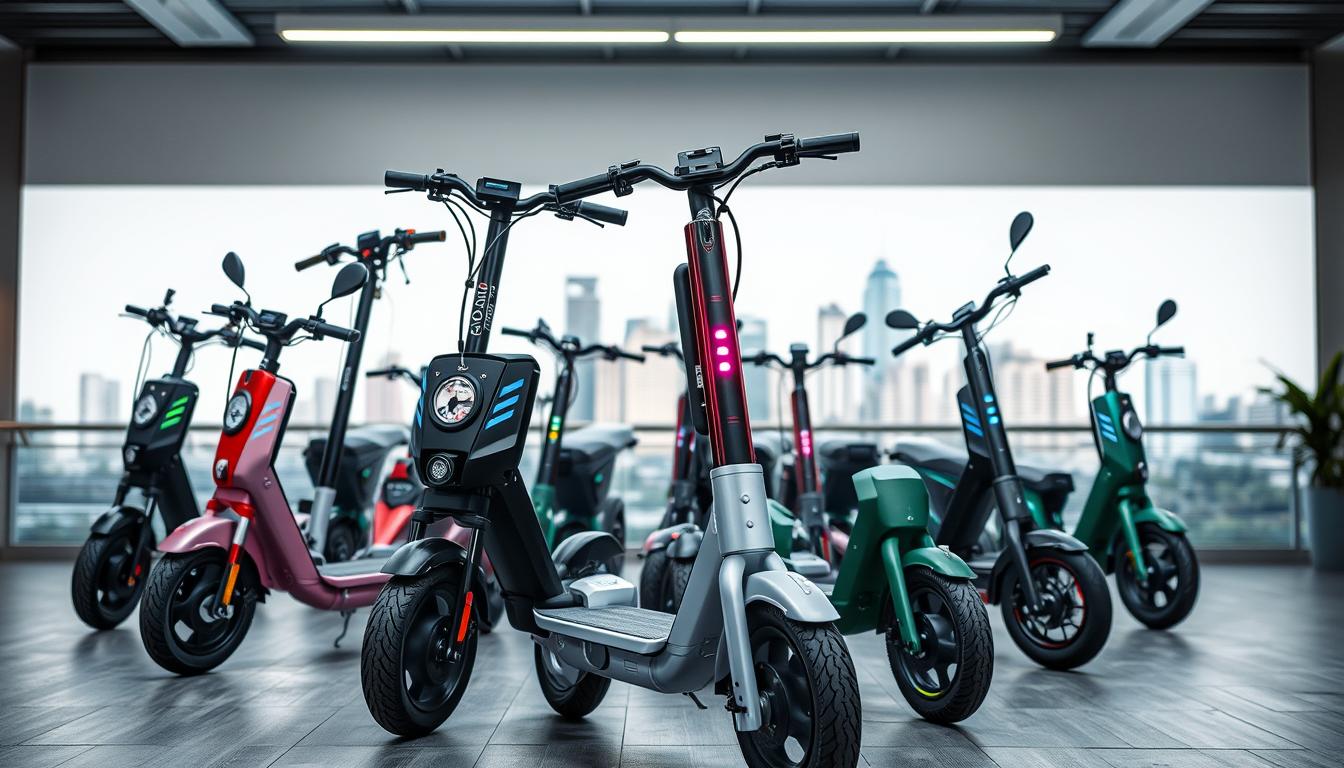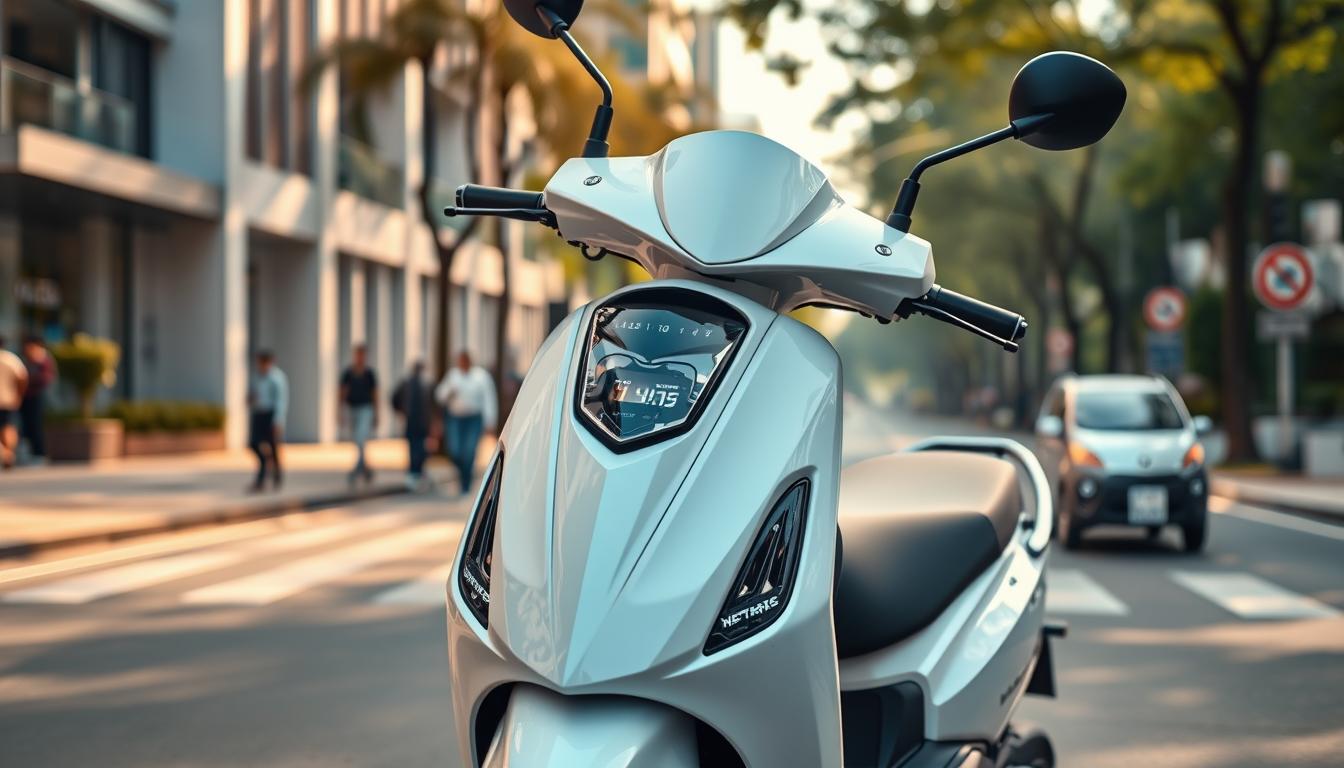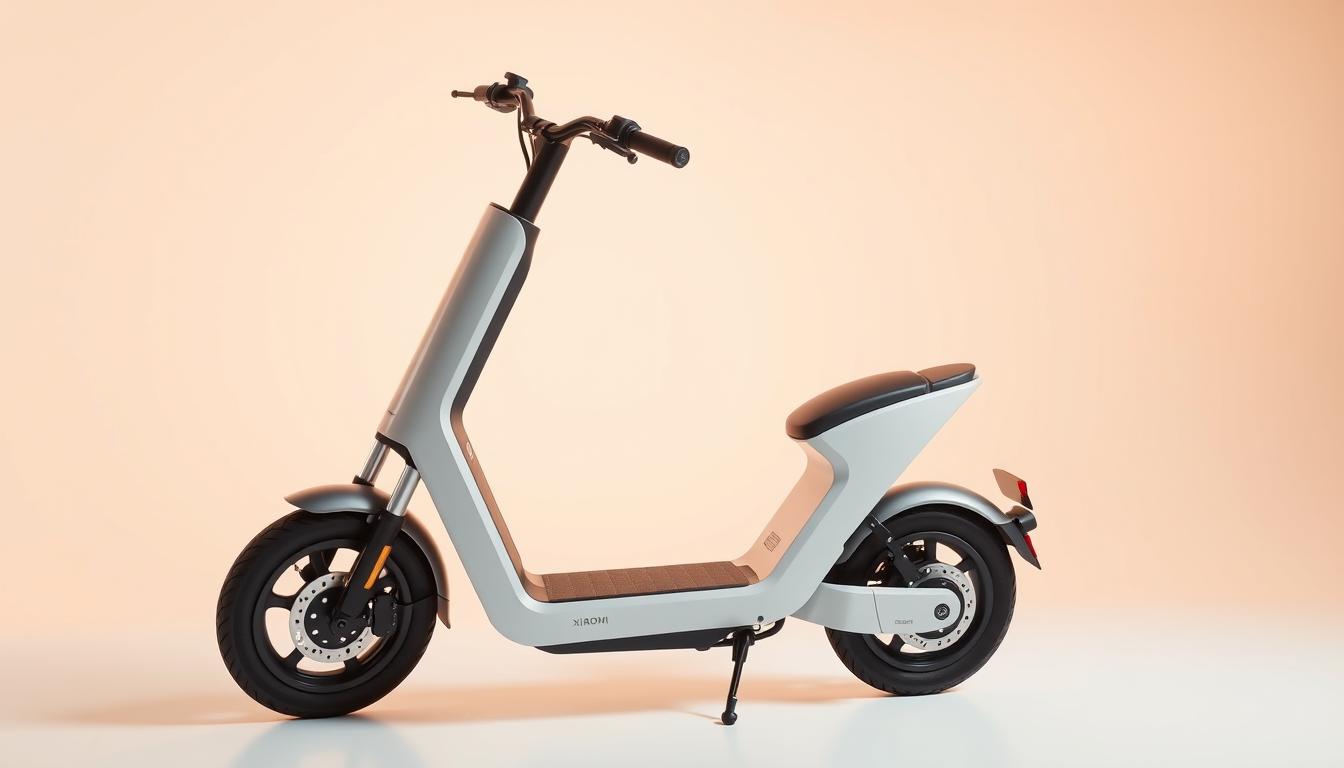
Top Picks: Best All Terrain Scooter for Off-Road Adventures
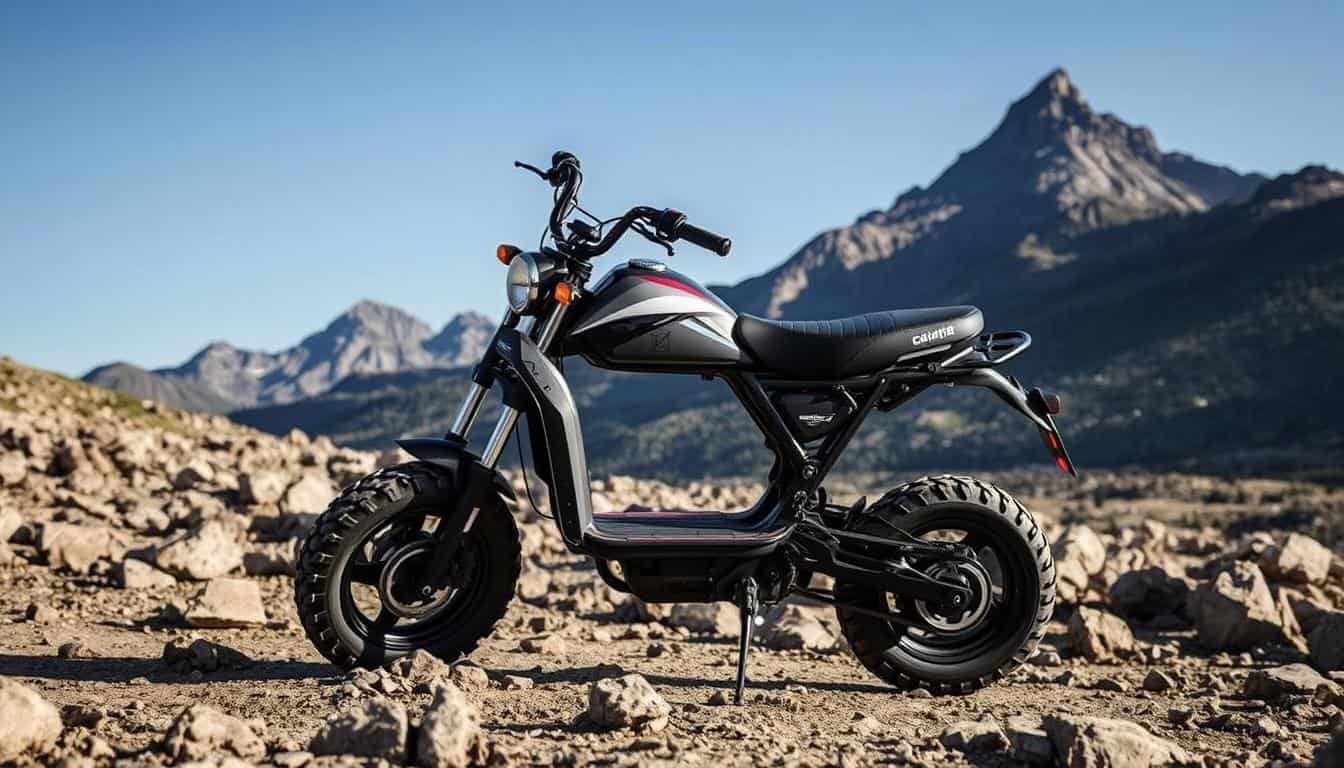
Off-road electric scooters are gaining popularity among adventure seekers. These rugged rides offer a thrilling way to explore trails, parks, and rough landscapes. With powerful motors and sturdy tires, they handle gravel, grass, and dirt with ease. They provide an exhilarating experience for riders looking to navigate challenging terrains, making them a great choice for outdoor enthusiasts. Many models come equipped with heavy duty electric scooter features that enhance stability and performance, ensuring a safe ride over uneven surfaces. As technology advances, these scooters are becoming even more versatile, with improved battery life and enhanced shock absorption for a smoother journey.
Choosing the right model depends on key features. Look for strong suspension, high weight capacity, and reliable stability. Top performers like the Wolf King GTR and NAMI Klima lead the pack with unmatched power and durability.
This guide covers 17 essential sections to help buyers make the best choice. From motor specs to tire grip, every detail matters for a smooth ride. Whether for fun or daily commutes, these scooters bring freedom to any adventure.
Why Choose an All Terrain Scooter?
Standard models struggle on rough paths, but off-road-ready designs thrive where pavement ends. These rugged electric scooters tackle gravel, dirt, and grass with ease, thanks to knobby tires and reinforced frames. Urban versions falter at just 7-15 mph on uneven ground, while specialized models maintain stability.
Built for adventure, they support 350-600 lbs—far beyond typical 250-300 lb limits. A 5.5″ ground clearance glides over roots and rocks, and dual suspension absorbs bumps for smoother rides. Rider Guide testing confirms their durability, with rigorous checks for trail readiness.
Weather won’t stop the fun either. IP54+ ratings shield against rain and dust, making them ideal for year-round use. With ranges of 23-40 miles per charge, explorers can venture farther without worrying about battery life.
Whether climbing hills or crossing fields, these machines turn obstacles into excitement. They’re not just transports; they’re gateways to uncharted routes.
Key Features of the Best All Terrain Scooters
The best rugged rides combine power, grip, and smooth handling. Whether tackling steep hills or loose gravel, these machines rely on three standout features: robust motors, grippy tires, and advanced suspension systems.
Powerful Motors for Rugged Terrain
Dual motors dominate tough trails. Premium models like the Wolf King GTR pack twin 1,200W engines, delivering unmatched torque for 28° climbs. Single-motor designs struggle on inclines, but dual setups prevent wheel spin with traction control.
Durable Tires for Optimal Traction
Rider Guide tests confirm 10″ knobby tubeless tires outperform street variants. The deep treads bite into dirt, while tubeless designs resist punctures. For mixed terrain, hybrid treads balance speed and grip.
Advanced Suspension Systems
Hydraulic suspension absorbs 70% more shock than springs. Dual systems cushion bumps evenly, while mono-shock designs save weight. The NAMI Klima proves stability matters—its refined setup glides over roots and rocks.
These features ensure confidence on unpredictable paths. From weight capacity to hill-climbing power, every detail fuels adventure.
Top 5 All Terrain Scooters for Off-Road Enthusiasts
Adventure seekers need rugged rides that conquer trails effortlessly. These top picks blend speed, durability, and smart features for unbeatable off-road performance. From budget-friendly options to high-end beasts, there’s a model for every explorer.
Wolf King GTR: Power and Performance
The Wolf King GTR is a trail titan with a 44 mph top speed and 97mi range. Its dual motors tackle 28° inclines, while the 330 lbs capacity supports heavier riders. Rider Guide tests praise its stability on rocky paths.
NAMI Klima: Agile and Responsive
With a 3.5s 0-15mph burst, the NAMI Klima thrives on quick turns. The dual-stem design enhances control, and the IP55 rating shrugs off rain. It’s a lightweight model for technical trails.
Segway Ninebot Max G2: Budget-Friendly Option
At $899, the Segway Ninebot Max G2 offers a 25 mph top speed and 43mi range. App connectivity adjusts settings mid-ride. While less rugged, it’s ideal for light off-roading.
Each model excels in different terrains. Whether chasing speed or savings, these rides deliver.
How to Evaluate an All Terrain Scooter
Not all electric rides handle rough paths equally—some excel where others fail. Trail-ready models prioritize ground clearance, weight capacity, and frame durability. These features ensure stability on uneven terrain and long-term reliability.
Ground Clearance and Stability
A minimum 5″ ground clearance (like the Afiscooter S4) prevents underbody scrapes on rocks or roots. Measure from the lowest frame point to the ground. Higher clearance improves stability but may raise the deck height.
- Double stems reinforce steering columns for wobble-free rides.
- Models with 15°+ incline ratings (e.g., EW-75) climb hills without tipping.
Weight Capacity and Durability
Heavy-duty frames support up to 600 lbs (Merits Silverado EX). Aircraft-grade aluminum resists corrosion better than steel. Look for:
- TIG-welded joints for crack resistance.
- ISO 9001-certified manufacturing for consistent quality.
These specs ensure your ride lasts through years of rugged adventures.
Battery Life and Range: What to Expect
Battery performance makes or breaks your off-road experience. Modern rides use lithium-ion batteries (like LG/Samsung cells) that last 800+ charge cycles—outlasting lead-acid options by years. Expect 23-40 miles per charge, with high-end models like the Silverado EX hitting 55mi.
Regenerative braking adds 5-10% more range by recapturing energy during stops. This tech shines on hilly trails, where frequent braking boosts efficiency. For long adventures, a display showing real-time stats helps riders plan stops.
Cold weather cuts range by 15-20%. Insulated battery packs and pre-riding a warm-up mode combat this. Voltage sag—a drop in power at low charge—is minimized by high-quality cells and a robust battery management system (BMS).
Recharge times vary: 8-10 hours for large packs, but fast chargers slash this in half. A BMS safeguards the battery from overheating and over-discharge, extending its lifespan. Choose models with these features for worry-free exploration.
Speed and Performance: Off-Road vs. On-Road
Speed and performance vary drastically between pavement and rough trails. While street-focused models prioritize top speed, off-road designs balance power with stability. Knobby tires and reinforced frames add grip but often reduce mph on smooth surfaces.
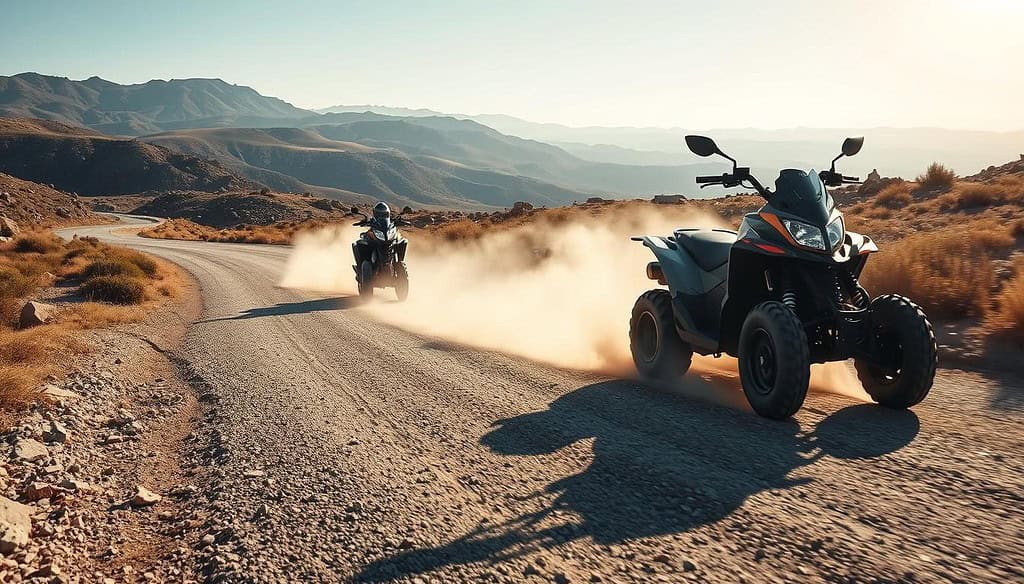
Top Speed Comparisons
The *Wolf King GT Pro* hits 62 mph on pavement but drops to 44 mph on trails. Rugged tires create friction, cutting speed by 25% compared to street models. Dual-motor setups like the *NAMI Klima* use torque vectoring to maintain traction without sacrificing acceleration.
Rider Guide tests show 0–30 mph times improve with trigger throttles over thumb controls. Electronic limiters can adjust max speed for safety, though off-road modes often disable them.
Handling Rough Terrain
ABS braking slashes stopping distances by 18% on loose terrain. Hydraulic systems outperform mechanical discs, especially downhill. Throttle responsiveness matters—trigger designs offer finer control over bumps than thumb paddles.
Dual motors excel here, distributing power to prevent wheel spin. Models like the *Wolf King* automatically adjust output based on incline, while simpler setups rely on rider skill.
Tire Types for All Terrain Scooters
Traction and stability depend heavily on the right tire choice for rugged rides. Knobby treads grip loose dirt, while street variants slip on uneven surfaces. Riders must balance durability, weight, and terrain needs.
Knobby Tires vs. Street Tires
Knobby tires increase traction by 40% on dirt, thanks to deep treads that bite into gravel and mud. Street tires, with smoother patterns, excel on pavement but struggle off-road. Rider Guide tests show 10″ knobby designs maintain control at 15+ mph on trails.
Hybrid treads offer a middle ground for mixed surfaces. They’re quieter on roads but sacrifice some grip in soft grass or sand. For pure off-roading, knobby is king.
Tubeless vs. Tubed Tires
Tubeless setups reduce puncture risk by 65% and often include self-sealing gel. They’re lighter but costlier ($90–$120 per tire). Tubed versions are cheaper ($45–$80) but prone to flats.
- PSI matters: 30–40 PSI for street, 20–30 PSI for trails (softer = better shock absorption).
- Solid tires eliminate flats but add weight and reduce comfort.
- Replace tires every 1,500–2,000 miles or when tread depth drops below 3mm.
For rugged adventures, tubeless knobby tires deliver the best blend of grip and reliability.
Suspension Systems for a Smooth Ride
A smooth off-road experience starts with the right suspension system. Hydraulic setups, like those in the NAMI Burn-e, handle 150kg+ impacts effortlessly. With 140mm of travel, they absorb bumps for a stable ride.

Premium models feature adjustable preload, letting riders fine-tune comfort for their weight. Spring suspension costs less but requires frequent lubrication. Air systems need less maintenance but are pricier.
Rebound damping matters—too stiff, and the shock bounces; too soft, and control suffers. Proper tuning keeps tires grounded. Center of gravity optimization also enhances stability on steep inclines.
- Failure rates drop 40% with hydraulic vs. spring suspension.
- Aftermarket upgrades like coil-overs improve performance for aggressive riders.
For rough trails, invest in a system that balances durability and adjustability. The right setup turns chaotic terrain into a glide.
Weight Capacity: Finding the Right Fit
Heavy-duty designs like the *Afiscooter* support up to 600 lbs effortlessly. Riders must match their weight to a model’s limits for stability and safety. Exceeding capacity strains motors and cuts performance by 20%, per *Rider Guide* tests.
Aluminum alloy decks balance durability and cost, while carbon fiber saves weight but costs more. Dual-battery setups add 5-7 lbs but extend range—ideal for heavy riders. Load distribution matters: center your stance to avoid wobbles.
*Rider Guide*’s 330 lbs stress test revealed key insights:
- Dual-motor models handle max capacity better, maintaining torque on hills.
- Weight-to-power ratios below 0.4 lbs/W ensure responsive acceleration.
Public trails often limit vehicles to 300 lbs. Check local rules before riding. For rugged adventures, pick a model with 25% extra capacity than your weight—it’s the sweet spot for performance and longevity.
Portability and Storage Considerations
Exploring rugged trails requires a ride that’s easy to move and store. Foldable designs add 15% to the cost but save space in garages or car trunks. The average weight for trail-ready models is 75 lbs, so smart solutions are key for hassle-free use.
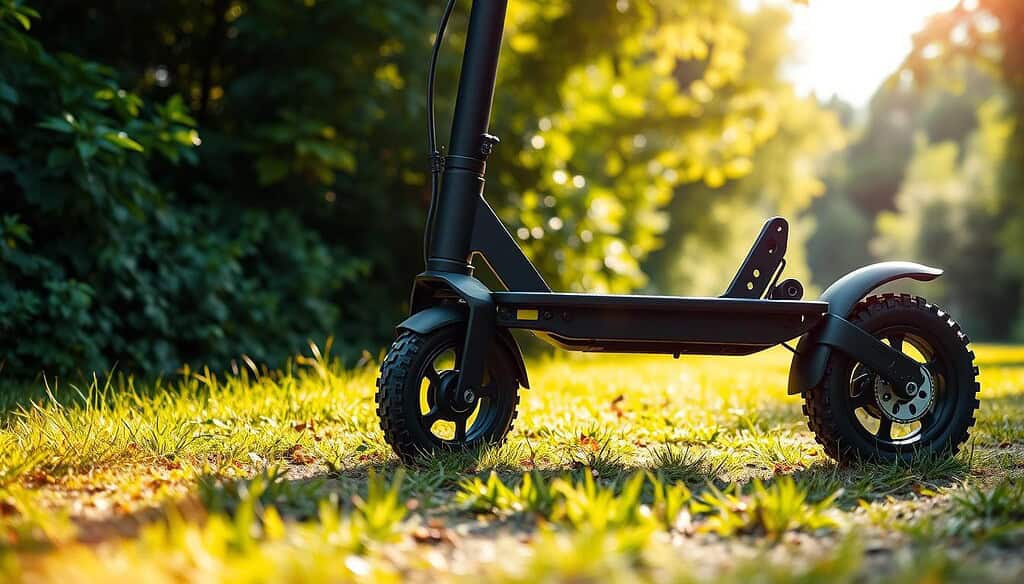
Folding Mechanisms: Latch vs. Magnetic
Latch systems are durable but need manual locking. Magnetic folds snap shut faster but may loosen over time. Check hinge parts for corrosion if riding in wet conditions. Some models require hex keys for disassembly—keep tools handy.
Transporting Your Ride
Hitch carriers handle up to 400 lbs, ideal for SUVs. Sedan owners should measure trunk size before buying. Airlines restrict lithium batteries, so check watt-hour limits. For home storage, control humidity to protect electronic parts.
- SUV vs. sedan: Roof racks work for lighter models (under 50 lbs).
- Garage tips: Use silica packs to prevent moisture damage.
- Quick checks: Tighten bolts monthly to avoid rattles during transport.
Safety Features for Off-Road Riding
Riding rough trails demands reliable safety features to prevent accidents. From steep hills to loose gravel, advanced tech keeps riders in control. This section covers must-have systems for braking and visibility.
Braking Systems: Stopping Power Matters
ABS reduces skid risk by 82% on loose terrain, making it essential for off-road rides. Hydraulic disc brakes outperform drum versions with faster response times and less fade. Key differences:
- Hydraulic discs: Self-adjusting, ideal for wet conditions.
- Drum brakes: Low maintenance but slower stops.
Emergency brake lights activate during sudden stops, alerting others. Models like the Wolf King GT include this feature for added safety.
Lighting and Visibility: See and Be Seen
2,000-lumen lights triple night visibility, crucial for trail riding. Turn signals are legally required in 28 states—check local laws. Reflector placement tips:
- Rear reflectors must be red and visible from 500 feet.
- Side reflectors improve visibility at intersections.
Advanced models add handlebar grips with textured rubber for better control. Horns should hit 85–100 decibels to alert pedestrians effectively.
Maintenance Tips for Longevity
Keeping your ride in top shape ensures years of reliable performance. Proper cleaning and battery care prevent costly repairs while maximizing durability. Follow these expert-backed steps to maintain every critical component.
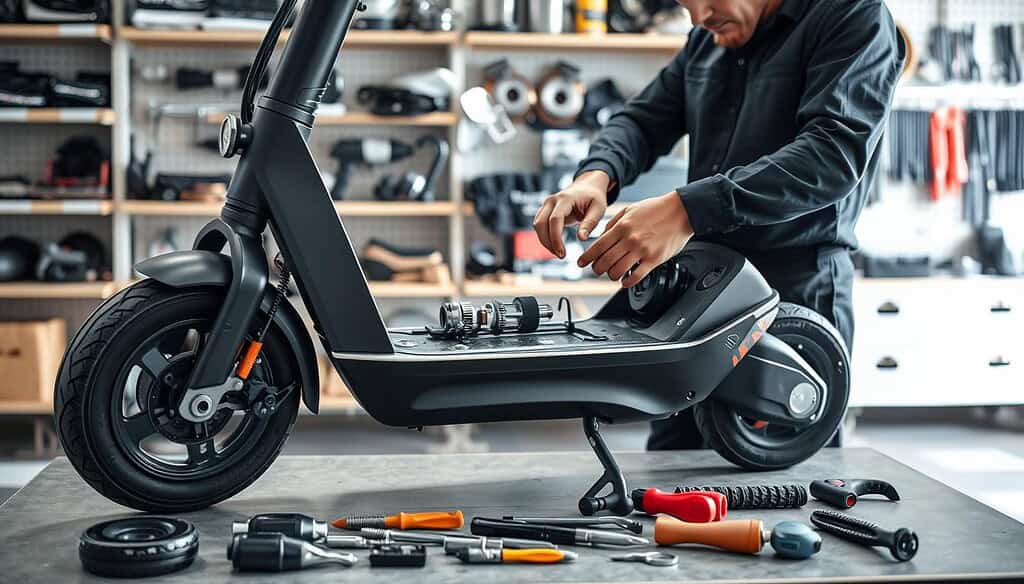
Cleaning and Care Essentials
Use 70% isopropyl alcohol for safe cleaning—it removes grime without damaging electronics. Avoid high-pressure sprays near parts like bearings or connectors. For stubborn dirt, soft brushes work best.
- Lubricate bearings every 300 miles with silicone-based grease to reduce wear.
- Check torque specs monthly: handlebar bolts (18-22 Nm), stem clamps (25-30 Nm).
- Inspect chain-driven systems for rust; belt-driven models need tension checks.
Battery Maintenance Guide
Store battery packs at 50% charge if unused for weeks. This prevents stress on lithium cells. For daily care, keep charge between 20-80% to extend lifespan by 200+ cycles.
- Update firmware quarterly—manufacturers optimize performance via patches.
- Monitor health with a battery tester to catch early issues.
- Avoid extreme temps; cold reduces capacity, heat accelerates degradation.
25-point inspection checklists cover critical areas like brake alignment and tire pressure. Never ignore warning lights—they signal needed care. Following these steps preserves your ride’s value and safety.
Budget vs. Premium: Which One Suits You?
Price tags don’t always reflect real-world performance on rugged trails. While budget models start at $1,000, the $2,000 range hits a sweet spot for reliable power and durability. Premium options ($3,000+) offer advanced features but demand a higher upfront investment.
Total cost of ownership reveals surprises. Premium models have 40% lower maintenance costs over five years. Their aircraft-grade aluminum frames resist corrosion, while budget builds may need part replacements sooner.
Warranties tell a similar story:
- Entry-level: 1-year coverage (e.g., *Hiboy Titan*).
- High-end: 5-year guarantees (e.g., *Wolf King GT*).
Financing eases the sting. Services like Klarna or Affirm split payments over months. Seasonal sales, like Black Friday, slash prices by 15–20%. Use *Rider Guide*’s ROI calculator to compare long-term value.
For occasional riders, budget works. Daily adventurers should lean premium. Both deliver thrills—just on different timelines.
Best All Terrain Scooter for Heavy Riders
Finding a rugged ride that supports heavier riders requires careful consideration of weight capacity and frame durability. Models like the Wolf King GTR officially handle 330 lbs, while reinforced decks can manage 500 lbs unofficially. Stability hinges on sturdy construction—12-gauge spokes prevent wheel deformation under pressure.

Foot deck size matters for comfort. The NAMI Klima offers 22″ of space, while the Apollo Pro provides 20″. Wider decks improve balance, especially for riders above 300 lbs. Extended-range batteries are recommended—dual setups add 10-15 miles per charge for heavier loads.
Rider Guide’s 400 lbs stress test revealed key insights:
- Dual-motor models maintain torque better on inclines.
- Load distribution mods, like centered standing positions, reduce wobble.
- Aftermarket seats (e.g., GTS Comfort Seat) improve long-ride comfort.
For optimal stability, check the best electric scooters for heavy riders. These models prioritize reinforced frames and high-torque motors to handle extra weight effortlessly. In addition to sturdy construction, look for options with larger wheels to improve traction and stability on uneven terrain. Furthermore, examining the solax mobility scooter features can provide insights into additional comforts and capabilities that enhance the riding experience. Whether for commuting or leisurely rides, these scooters combine durability with performance to meet the needs of heavier riders. Additionally, consider the weight distribution and wheel size, as these factors significantly influence ride comfort and maneuverability. For families, exploring the best ride on scooters for kids can also enhance outdoor fun while ensuring safety and entertainment. Choosing a scooter that balances durability and performance will provide an enjoyable experience for both adults and children alike.
Aluminum alloy decks resist flexing, while air-filled tires absorb shocks better than solids. Heavier riders should target a weight capacity 25% above their actual lbs to ensure longevity. Proper maintenance—like monthly bolt checks—keeps everything secure.
Where to Ride Your All Terrain Scooter
From grassy fields to sandy shores, each terrain presents distinct challenges. Riders must adapt tire pressure, speed, and gear to conquer these landscapes safely. Whether exploring state parks or coastal paths, preparation ensures a smooth adventure.
Grass, Gravel, and Dirt Trails
Wet grass reduces speed by 70%, demanding cautious throttling. Knobby tires excel here, while street treads risk slippage. For gravel and packed dirt, 25–30 PSI balances grip and comfort.
Mudguards prove essential—longer designs block 70% more debris. Check state park rules; some restrict motorized vehicles on natural trails. Geofencing software can auto-limit speed in protected zones.
Sand and Beach Riding
Sand requires 10 PSI for optimal floatation. Avoid saltwater—it corrodes bearings and electronics within weeks. Tide schedules matter; low tide exposes firmer packed sand for easier rides.
- Insurance check: Coastal areas may require liability coverage.
- Rinse post-ride: Freshwater cleans salt and grit from critical parts.
- Storage tip: Keep batteries dry to prevent moisture damage.
With the right adjustments, every terrain becomes a thrilling playground. Always prioritize local regulations and environmental respect.
Ready to Hit the Trails?
The journey from selection to adventures begins with smart choices. Focus on three essentials: a powerful motor, grippy tires, and smooth suspension. These ensure control and comfort on any path.
Still deciding? Rider Guide’s comparison tool simplifies side-by-side checks. Local demo events also let you test rides firsthand—perfect for feeling the difference.
Join rider communities to swap tips and discover new routes. They’re goldmines for safety hacks and maintenance tricks. Don’t forget: a solid warranty protects your investment long-term.
Now, gear up and explore with confidence. The trails await!
FAQ
What makes a scooter suitable for rough surfaces?
Models designed for rugged conditions feature durable tires, strong motors, and full suspension to absorb shocks. These ensure stability on uneven paths like dirt, gravel, or grass.
How far can an electric scooter travel on a single charge?
Range varies by model, but premium options like the Wolf King GTR offer up to 70 miles. Budget-friendly choices typically provide 20–30 miles, depending on speed and terrain.
Are off-road scooters safe for heavy riders?
Yes, many support up to 330 lbs. Look for reinforced frames, wider decks, and dual braking systems for added safety and durability.
What’s the top speed of an all-terrain model?
High-performance scooters, such as the NAMI Klima, reach 40+ mph. Entry-level versions usually cap at 15–25 mph for better control on rough ground.
Can these scooters handle sand or beaches?
Knobby tires and high torque motors improve traction on loose surfaces. However, deep sand may reduce efficiency, so check the manufacturer’s guidelines.
How important is ground clearance?
Critical for avoiding obstacles. Models with 5+ inches of clearance, like the Segway Ninebot Max G2, perform better on rocky or uneven trails.
Do they require special maintenance?
Regular checks on tire pressure, brake pads, and battery health extend lifespan. Clean after rides, especially in muddy or wet conditions.
Are folding mechanisms reliable for portability?
Most premium scooters feature sturdy folding systems for easy transport. Test the latch stability before purchasing if frequent commuting is planned. Additionally, consider the weight and portability of the scooter, as lighter models are generally easier to carry. Researching customer reviews can also help identify the best commuter scooter options that align with your needs. Finally, ensure that the scooter has adequate safety features, such as lights and reflectors, to improve visibility during your rides.
What lighting options enhance nighttime safety?
LED headlights, taillights, and reflectors improve visibility. Some models, like the NAMI Klima, include customizable RGB lighting for added style.
Is a full suspension necessary?
For comfort on bumpy trails, yes. Dual shock absorbers reduce fatigue and improve control, making long rides more enjoyable.

